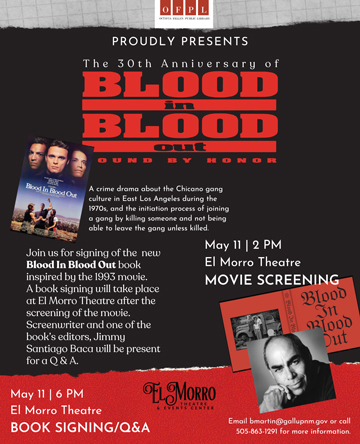The cliché of starving artists is an old saw for a reason: Very few artists make a living from their artwork. It’s even more difficult for those who live in remote places and have few opportunities to show their work.
For Zuni artists, that’s changing. The Keshi Foundation, which opened a Zuni gallery in Santa Fe decades ago, opened the Zuni Artist Resource Team at 120 W. Coal Ave. in early August. The Gallup site is open Tuesdays through Fridays and will be open during ArtsCrawl events.
The shop is part gallery, representing about 230 artisans so far, part fledgling Museum of Zuni Art, part training center and part web resource to help the artists display and market their work.
“It comes down to, if the thing you do best is artwork, do you want to be distracted by doing your own website, maintenance, fulfillment? Or is your time best spent making your artwork?” ZART Executive Director Peter Kahn asked.
Most of the work available at ZART is jewelry and carved stone fetishes, but the gallery hopes to offer pottery and other media as it grows.
For now, a 16-foot-long display case on the wall holds about 145 different donated pieces, and the full museum collection is up to about 200 pieces.
“We want to complete the buildout of the showcase and have that function as a mini museum,” Kahn said. “Our goal is to see a state-of-the-art, full-blown Zuni museum in Gallup.”
Meanwhile, tourists are welcome to drift into the gallery to see the museum pieces and whatever is available for sale in the gallery. The more determined among them can use an in-store computer terminal to see the entire collection and make purchases.
ZART also has a strong social media presence, with a Facebook page that showcases the art.
“We’re trying to post five times a week now, with 10 images each,” Kahn said.
The expansive plan has its roots in the Zuni Pueblo, but also in Santa Fe. Kahn’s wife, Robin Dunlap, was a teacher in the Zuni Pueblo in the 1970s. She’s the president of the volunteer-run nonprofit The Keshi Foundation, dedicated to showing Zuni artists and giving them a platform for selling to the world.
The group opened a co-op gallery called Keshi in Santa Fe in 1981. Nearly a decade later she bought the co-op to run as a private gallery, but she was still on a mission. Keshi the Zuni Connection moved into a larger space in Santa Fe in 2002 and Dunlap’s daughter, Bronwyn Fox, took it over. Today it represents about 600 artisans.
Based on studies, Kahn estimates that about 10% of Zuni’s estimated 12,000 population make a living with their art. Before the co-op, nearly half of those were selling their work directly to traders, and not always at a fair price.
“We tried to create a fair market outlet for them. Within a year or so the Zunis realized they were trying to run an operation three and a half, four hours away,” Kahn said.
After a Zuni jeweler came into the gallery in 2015 complaining that he was unable to get his work into the Santa Fe Indian Market, the Keshi Foundation counterprogrammed the Market with its first Zuni Art shows in 2016 and 2017 at the rented Scottish Rite temple.
The first twi shows made $650,000, mostly on art donated from private collections. The jeweler who hadn’t made it into the Santa Fe market was the first to sell out.
“We decided [the show] was too much work for too few people,” Kahn said. “The question we posed was, ‘OK, so we helped 250 artists. What about the other 1,200 artists in Zuni that aren’t in the show? How do we help them?’”
The opening of ZART and the website answer that question. The foundation still sells donated artworks and sometimes has trouble tracking down the artists to let them know their work has sold. When each piece sells, ZART will send the artist (where known) a postcard congratulating them on the sale and offering to represent their work.
The gallery uses proceeds – the difference between the purchase and selling prices – to support ZART and buy work from contemporary artists.
“If we sell donated work, we will sequester money that will be dedicated to purchase work from contemporary artists,” Kahn said.
ZART also opens the dialogue with art collectors and consumers, with pieces that offer a visual history of Zuni commercial art. Fetishes are one example of the evolution.
“Zuni have been making fetishes as ceremonial work for years,” Kahn said.
He added the story that can be told is when Zuni artwork became a tourist commodity at the beginning of the 20th century, one that can almost be traced.
“Originally they started carving with local stone, travertine, they even called it Zuni stone,” Kahn said. “It evolved from relying on what old style carving was, it really became small sculpture. You see things now, you see elephants, you see animals you aren’t going to see around Zuni. It’s expanded the artists’ intention and creation, and interpretation is expanding as well.”
For artisans showing their work on the ZART website (https://www.zarteam.org), the images remain even after pieces are sold. That leads to commission work from customers who want similar pieces.
The gallery hopes to hold retrospective exhibits from the donated pieces in the ZART collection, as well as rotating installations of contemporary work. Those may feature individual artists or focus on a particular tradition, animal, or stone.
“We’re hoping by this time next year the rest of the displays are in place,” Kahn said. “Then we can have a grand opening.”
By Holly J. Wagner
Sun Correspondent

















